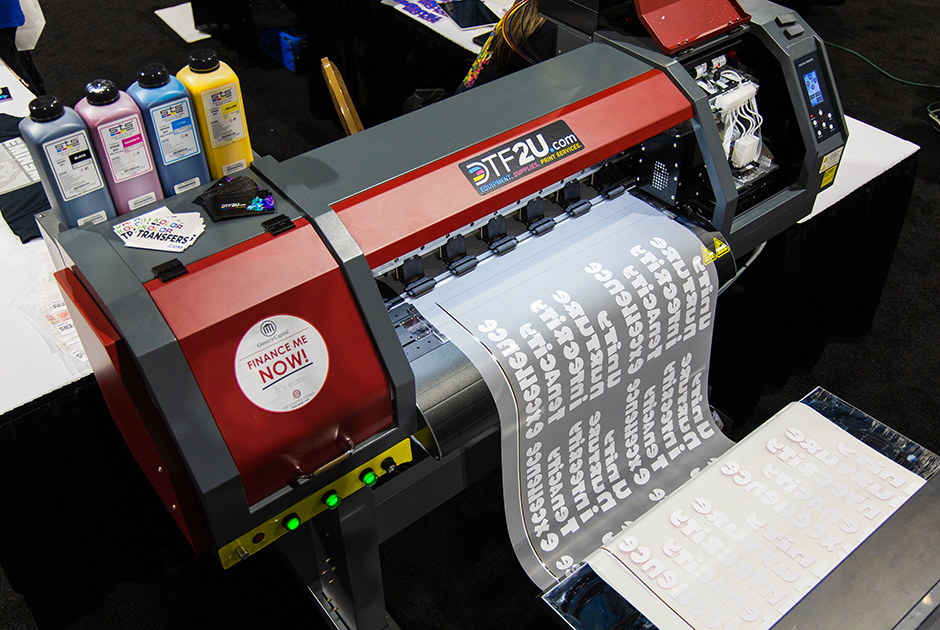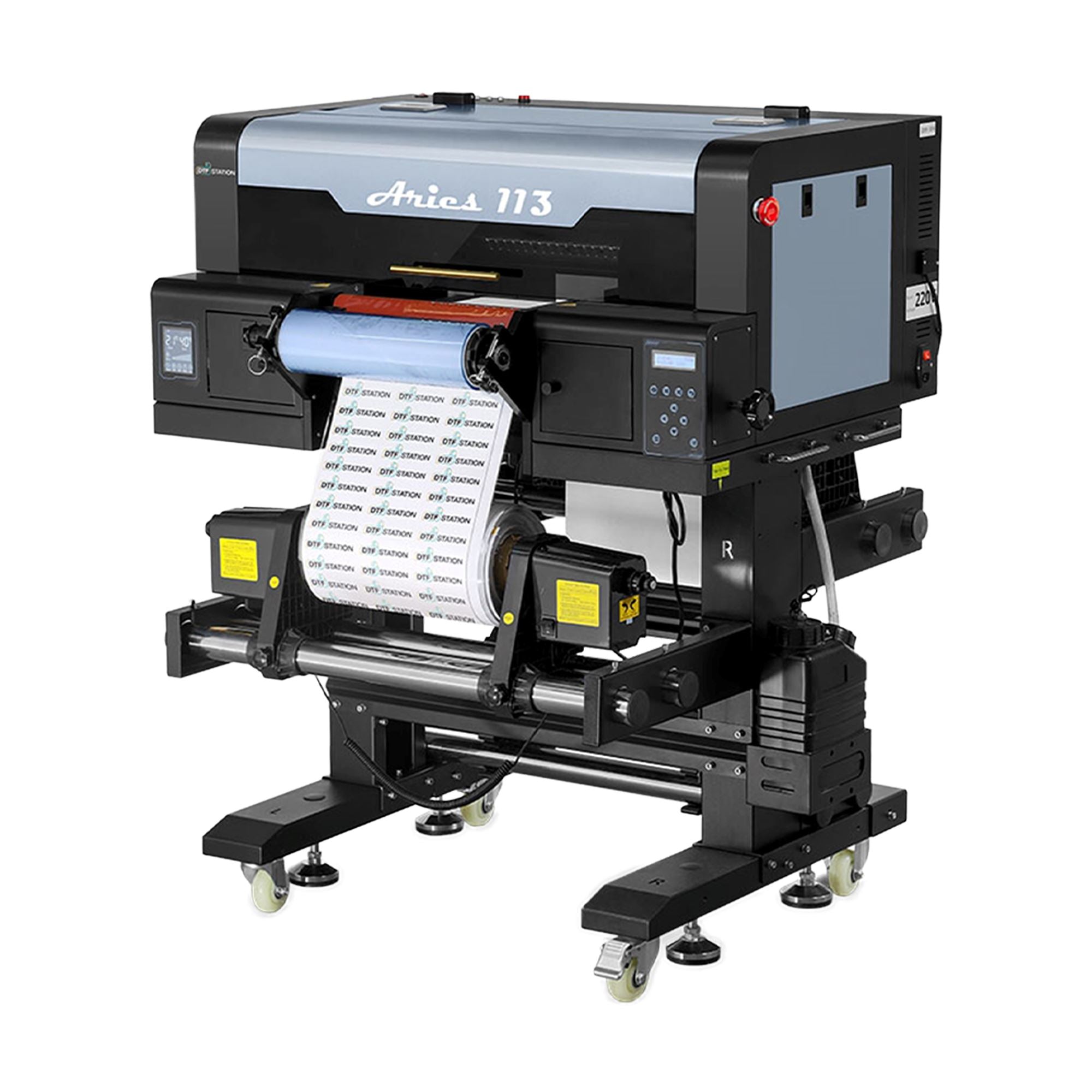The Future of Fashion: Exploring DTF Printing Modern Technology in the Fabric Industry
In recent times, the textile market has actually experienced a marked change in the direction of ingenious modern technologies that are reshaping the landscape of fashion manufacturing. Amongst these advancements, Direct to Movie (DTF) printing modern technology has actually become an appealing challenger, supplying distinct capabilities and possibilities for developers and suppliers alike. This sophisticated printing technique has actually sparked rate of interest due to its possible to revolutionize typical textile printing procedures. As we look into the implications and possibilities of DTF technology in the realm of style, it becomes evident that its integration could redefine industry standards and pave the method for a brand-new age of creative expression and effectiveness.
Development of Textile Printing
Throughout background, the advancement of fabric printing has been a testament to the ingenious developments in this elaborate art kind. From the old worlds utilizing strategies like block printing to the digital revolution of today, fabric printing has continuously pressed boundaries. The beginnings of fabric printing can be mapped back to China around 220 ADVERTISEMENT, with making use of wooden blocks to publish on silk materials. As the craft spread to other components of the world, brand-new methods such as screen printing and roller printing emerged during the Industrial Transformation, reinventing the fabric market - DTF Printing.
In the 20th century, innovations in innovation caused the growth of rotating display printing, enabling faster and a lot more complex styles. The introduction of digital textile printing in the late 20th century noted a considerable shift in the direction of more sustainable and flexible printing approaches. Today, with technologies like Direct-to-Fabric (DTF) printing technology, developers can create lively, detailed prints with better performance and decreased ecological influence. The evolution of textile printing showcases an abundant background of creative thinking, resourcefulness, and technical progress on the planet of fashion and design.
Advantages of DTF Technology
With the evolution of textile printing techniques from old approaches like block printing to modern-day innovations such as electronic printing, the introduction of Direct-to-Fabric (DTF) innovation has significantly boosted the effectiveness and sustainability of fabric printing processes. Among the key benefits of DTF technology is its capability to directly print layouts onto fabric without the need for transfer documents, which lowers waste and simplifies the production process. In addition, DTF printing permits greater color vibrancy and information accuracy contrasted to typical methods, allowing textile suppliers to create top notch and detailed styles with convenience.
Additionally, DTF technology is known for its versatility, as it can be used on various types of materials, including natural fibers like woollen, silk, and cotton, along with artificial materials such as polyester and nylon (DTF Printing). This flexibility opens up a broad variety of opportunities for designers and suppliers to try out various structures and materials, causing even more ingenious and special items in the fashion business. On the whole, the execution of DTF technology represents a considerable development in textile printing, providing numerous benefits that add to the future sustainability and imagination of the market
Sustainability in vogue Manufacturing
Stressing environment-friendly practices is paramount in contemporary fashion production, lining up with the growing customer need for lasting items. Recently, the garment industry has actually faced increasing examination due to its significant environmental impact, consisting of too much water use, chemical contamination, and fabric waste. As a feedback, many fashion brand names are now integrating sustainable methods into their production procedures to minimize injury to the setting.
Sustainability in vogue manufacturing includes numerous elements, such as making use of recycled and natural products, reducing energy consumption, executing honest labor practices, and advertising transparency throughout the supply chain. In addition, innovations in modern technology, like DTF printing, offer possibilities to further improve sustainability in fabric production. This modern technology makes it possible for specific printing on materials, reducing ink wastage and water usage compared to standard printing techniques.
Style Liberty and Modification

Additionally, DTF printing assists in customization on a range formerly unattainable, enabling customized garments and unique pieces customized to private choices. Consumers can now actively join the layout procedure, creating garments that reflect their design and character. This personalization not only improves the consumer experience yet additionally advertises a feeling of exclusivity and uniqueness in a market saturated with mass-produced clothing. Generally, DTF printing modern technology changes the design landscape in the fabric industry, using countless possibilities for innovative expression and customized fashion.
Effect On Supply Chain & Market Trends
DTF printing technology in the textile sector is improving supply chain dynamics and influencing market trends with its efficiency and personalization capacities. By enabling on-demand printing and eliminating the requirement for large inventories, DTF technology simplifies the click reference supply chain procedure. Producers can produce products as required, minimizing waste and storage costs. This just-in-time manufacturing design also permits quicker feedback to market needs and patterns, bring about an extra nimble and responsive supply chain.
In addition, the personalization possibility of DTF printing innovation is changing the market patterns in the textile sector. As an outcome, DTF technology is driving a change in the direction of more customer-centric and cutting-edge strategies within the fabric market, forming the future of fashion.

Final Thought
To conclude, DTF printing modern technology is revolutionizing the fabric market by offering various benefits such as layout modification, sustainability, and freedom. This ingenious technology is improving the future of style manufacturing, impacting supply chains, and driving market patterns towards more environmentally friendly great site and efficient practices. As the sector proceeds to advance, DTF printing will play a vital role fit the method fabrics are produced and consumed in the years to find.
From the ancient people making use of methods like block printing to the digital revolution of today, fabric printing has actually continually pushed boundaries. As the craft spread to various other parts of the globe, brand-new methods such as screen printing and roller printing arised during the Industrial Revolution, reinventing the textile industry.
The intro of electronic textile printing in the late 20th century marked a substantial change in the direction of even more functional and sustainable printing techniques.With the development of textile find more information printing techniques from ancient methods like block printing to contemporary advancements such as digital printing, the introduction of Direct-to-Fabric (DTF) technology has actually substantially improved the effectiveness and sustainability of fabric printing procedures (DTF Printing).In action to the imperative shift towards sustainability in fashion production, the fostering of innovative modern technologies like DTF printing not only addresses ecological problems but additionally opens up avenues for unequaled style liberty and personalization in the fabric sector